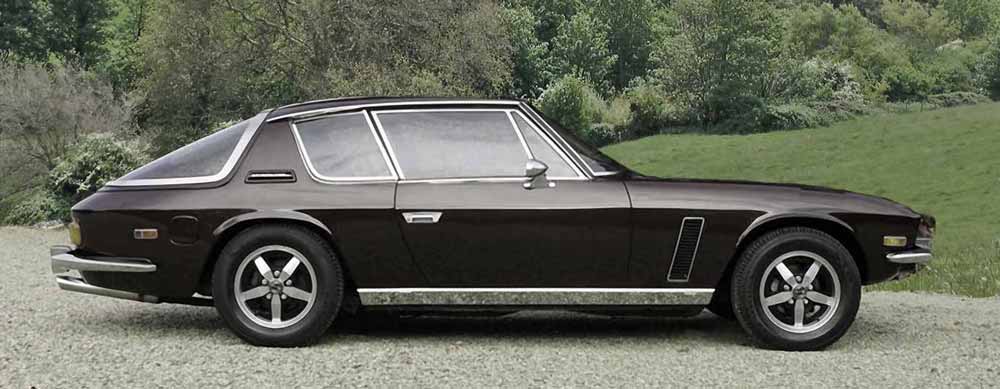Top British Cars
Cars made in Britain that rivalled the world's best

During the early 1960s Jensen had reasonable success with their four seater GT car, the C-V8, which had a fibreglass body to keep it's weight down, and was powered by large Chrysler engines. It was one of the fastest four seater cars of it's day; with a 6.3 litre engine generating 3 to 5 brake horsepower it could hit 136 mph and rocket from 0 to 60 in 6.7 seconds. Unfortunately, despite these impressive statistics, it was just plain ugly. sales were slipping.
Conversely, its successor, the Interceptor, was beautiful. This was particularly important since the target market was well-heeled business people who would be more concerned with comfort and elegance than sheer top speed.
The styling was the work of Italian design company Carrozzeria Touring.Six months after they started work a prototype was ready and taken for a four-day test run on Italian roads. It passed with flying colours so in October of 1966 it was displayed at the Earls Court motor show. A flood of orders resulted from this.
Two door hatchbacks, convertibles and coupes were available. There were four plush leather covered seats, a pile carpet and acres of luggage space which was easily accessible via the tailgate. The bodywork was constructed from steel rather than fibreglass so it was heavier than its predecessor but it could still hit 133 mph and go fom 0-60 in 7.4 seconds. Ample speed for the business tycoons who would want to be buying it.
The Interceptors had electric windows, reclining seats to the front, twin speaker radios, reversing lights, and a clock; all features that we consider to be essential these days but which were very unusual back in the 1960s. By late 1968 power steering became a standard feature and by 1971 air conditioning joined the list.
The car remained virtually unchanged, apart from numerous improvements, selling steadily for 10 years. The end came however when Jensen went bankrupt. This was caused by a combination of circumstances; in 1976 there was a great deal of social unrest and a three-day week with regular power cuts; poor relations between management and workforce blighted most of the car industry (and just about every other industry as well); and a lack of investment caused by low confidence of the company's bankers that they could survive through a very difficult period for luxury car manufacturers.
Another company called Jensen Parts and Services was set up to provide servicing and spare parts for existing Jensen owners and by 1983 they brought out their own new Interceptor. The price was very high however and only around a dozen of these cars were sold before, yet again, the company went bust. Since then several attempts have been made to resurrect it, sadly without success. It is highly likely that Jensen will never again rise from the ashes.